When the owner of a Colorado cattle ranch decided to create his second world-class ranch for breeding and training cutting horses, he already knew the visual look he wanted and the function he needed. So, to bring Marvine Ranch in Weathersford, Texas, to reality, he brought together a team of two architectural firms—Lake|Flato of San Antonio, Texas, with the building aesthetic he loved, and GH2-Gralla of Tulsa, Okla., with the equestrian-design expertise he needed—to make the facility functional, safe, and healthy.
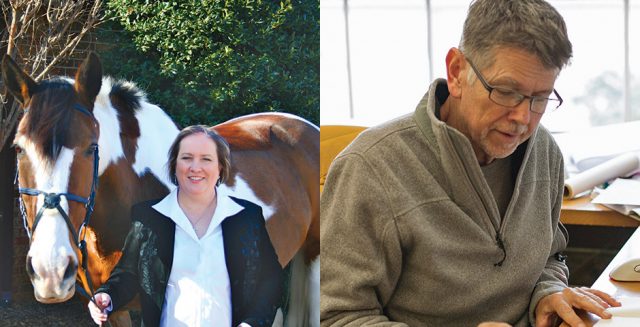
Edinger: The ranch is on 340 acres of coastal fields in the Texas hill country, with a sprinkling of red and live oak. It’s right in the center of the cutting-horse capital of the world outside of Dallas/Fort Worth. We have 12 large pastures and 11 paddocks that are all fenced with five-rail steel pipe and have individual shelters. Two ponds hold water for irrigation and keep the place lush and green. We generally get four cuttings of hay.
The indoor riding arena is 300 feet by 140 feet in a building that includes a sound system, viewing areas, storage, and bathroom. Just behind it is a fully lighted outdoor arena. There is a 22-stall main barn, a 12-stall mare barn, a separate hydrotherapy barn with an underwater treadmill, and an outdoor arena and track.
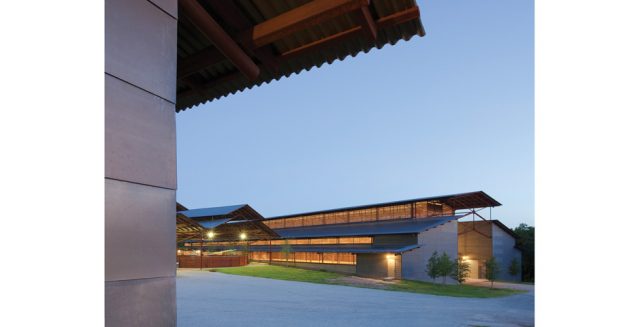
How did you get started?
Aylor: Lachlan and I spent a lot of time walking the site and developing the master plan, which included placing the buildings, pastures, hay fields, and roads. We relied on Lachlan to understand the routines and needs of a horse facility.
Oldaker: It was just raw land covered in brush. We brought in an Oklahoma firm that helps to reclaim pastures. And yes, starting with a master plan is critical. You consider the workflow of the farm, the health and safety of the animals and people, maximizing views, maintaining privacy, large vehicle access, and the locations of future expansions.
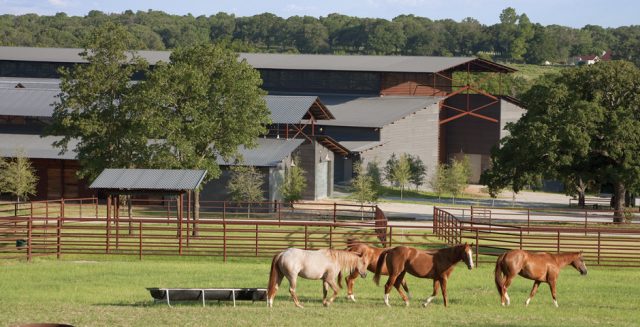
And the design?
Aylor: The owner valued privacy and simplicity. He didn’t want a grand entrance or ostentatious structures. The design is in the Texas hill country vernacular, built with simple shapes and materials typical to the area: metal pipe, corrugated metal, wire fabric, flat-seam metal, and wood. I call it “ranch tech.”
We looked at how working ranches are done traditionally, and re-created it contemporarily, including lots of input from Lachlan and the owner.
Our approach is to be as simple as possible and let the materials express themselves.
Oldaker: For optimum workflow, the barns are arranged in a procession from stalls to tack room to arena to paddocks. It is both aesthetic and functional.
Edinger: From my standpoint as the ranch manager, it is designed for ease of workflow, to get through a lot of horses quickly. Everything basically is under one roof, continuously connected. You can go from A to Z in one motion. You don’t have to go far or backtrack to do anything.
Oldaker: The breezes here come from the south, and the buildings are oriented to take advantage. Because of the temperate climate, we maximized our use of metal mesh for walls. The corrugated and perforated materials block the wind but allow air and light inside. You can look out through the walls, which gives the interiors an open, airy feel. You wouldn’t want a fully-enclosed arena in this climate.
Aylor: I’m probably most proud of how it fits so naturally into the land. It’s not overwhelming. Facilities this size often feel like industrial complexes.
The road approach arrives at a high point, and you look down on the facility. For example, the south side of the arena is cut into a hillside to reduce the scale. If it were on flat ground it would be overwhelming.
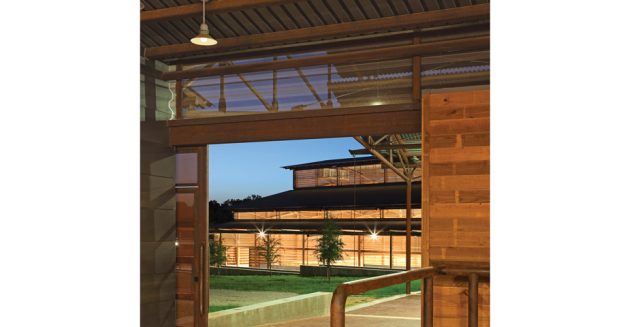
How does the cost compare to conventional building?
Aylor: Well, we’d have to define conventional. Perhaps the base cost is slightly more expensive than the norm, but saving the time and materials required to cover up all that we left exposed probably equals out. Lighting and ventilation expense is reduced. Plus the rusted-metal structure obviously saves on yearly paint and maintenance costs.
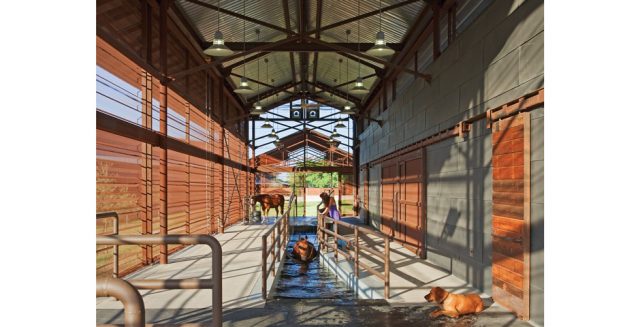
How was working together as a team?
Aylor: Well, like I said, we couldn’t have done an equestrian project of this scale without Lachlan. She knows so much about all aspects of the equestrian world.
Oldaker: Creating Marvine as a team worked really well. Actually, we often team up with other architects to add our equestrian knowledge to their projects.
Edinger: These two groups did a fabulous job working together. The architecture is award-winning, and Lachlan has done such a fabulous job in horse-care functionality.
